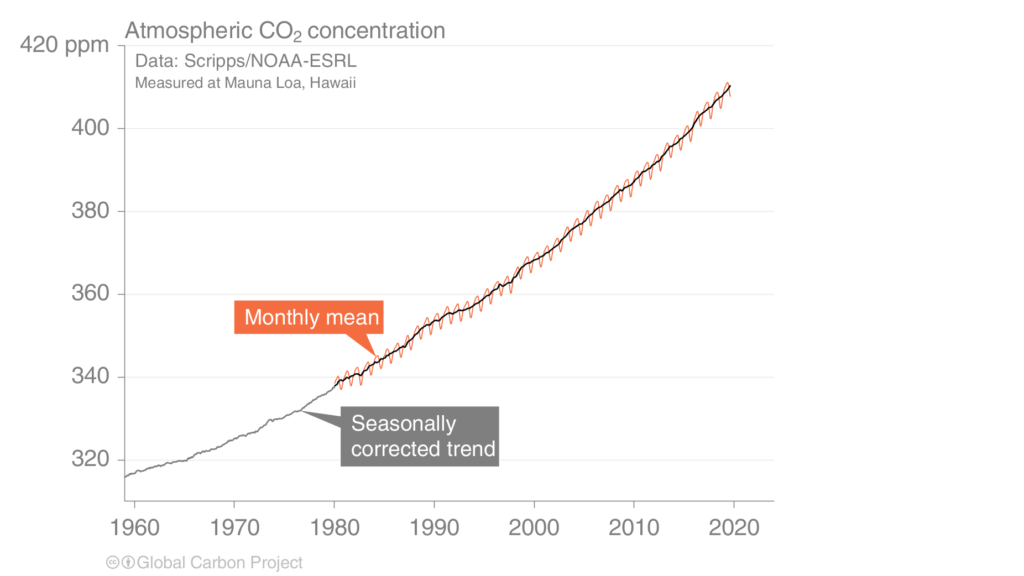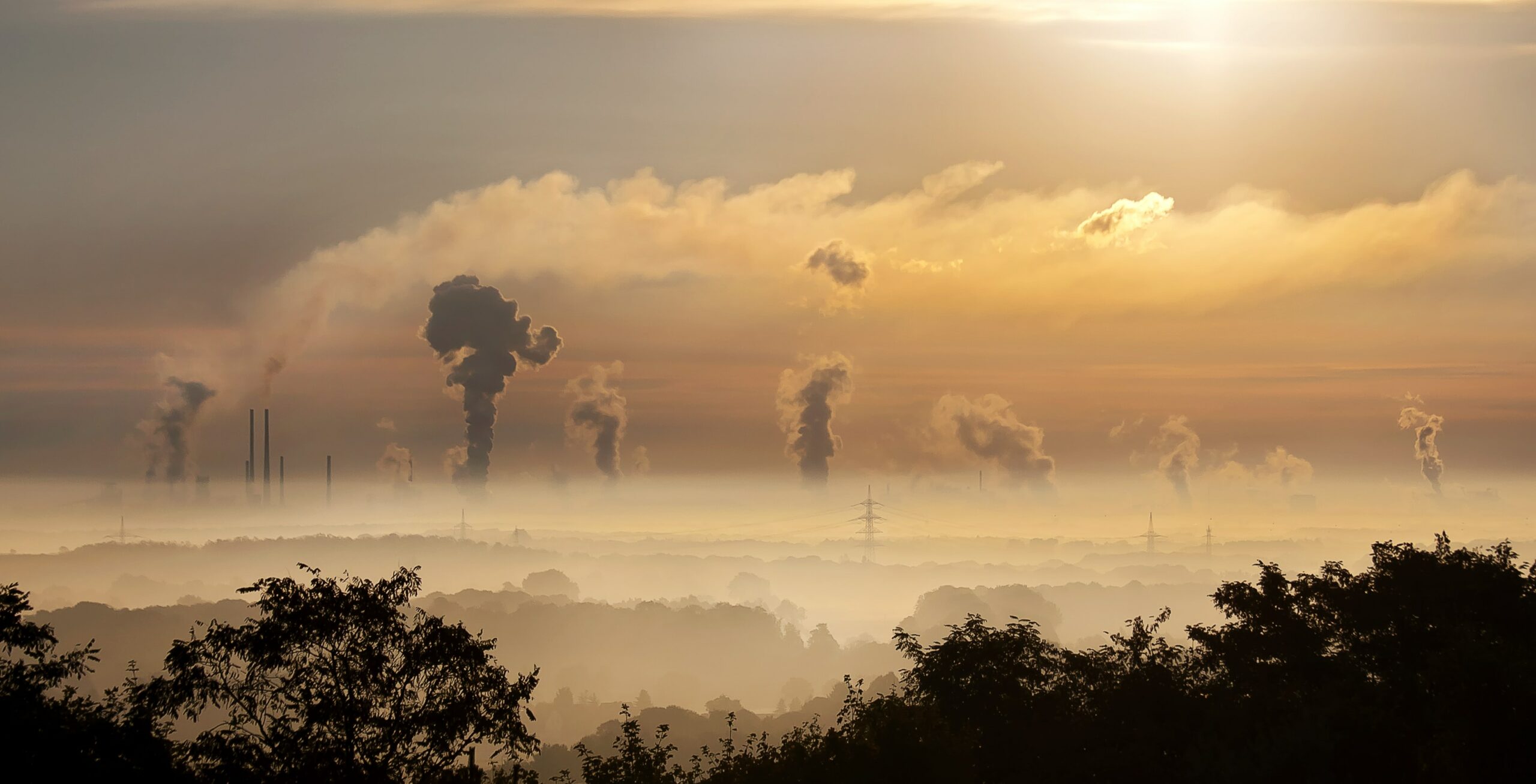We did reduce greenhouse gas emissions, but…
We know that human activities releasing so-called greenhouse gases (notably carbon dioxide and methane) into the atmosphere have been causing global climate warming. The effects of the rising temperatures are increasingly evident worldwide – shrinking polar ice caps, rising sea levels, more frequent extreme weather events, heat waves and droughts.

CO2 concentration in the atmosphere. Pre-industrial levels were about 280 parts per million (ppm) Source: Global Carbon Project
Our planet is already 1°C warmer than in preindustrial times, when greenhouse gas concentrations were much lower. The scientific consensus is that the rise in temperature needs to be stopped at 1.5°C to keep climate warming impacts at a manageable level.
Once released, carbon dioxide (CO2) remains for centuries in the atmosphere and even longer in the oceans. At current CO2 concentrations, stopping climate warming at 1.5°C means cutting carbon emissions almost in half by 2030, and reaching net zero emissions by 2050.
What Happened During the Lockdowns?
We all know that the COVID pandemic dramatically reduced many emissions producing activities worldwide, including surface transportation, power generation, air travel and industrial activity. So this should have had a significant impact on CO2levels, right? Is this the sort of change that would get us to our 1.5°C goal?
In a word, no. A report released by the World Meteorological Organization November 23, 2020, based on extensive observations and measurements from worldwide monitoring stations, concludes that the effect of the pandemic slowdown was less than we might have hoped:
“The lockdown has cut emissions of many pollutants and greenhouse gases such as carbon dioxide. But any impact on CO2 concentrations – the result of cumulative past and current emissions – is in fact no bigger than the normal year to year fluctuations in the carbon cycle…”
Even at the peak of the pandemic shutdown, daily CO2 emissions were reduced by only 17% worldwide. The WMO’s estimated reduction in annual emissions for 2020 is between 4.2% and 7.5%, and atmospheric CO2 concentrations are showing a year over year increase.
The Secretary-General of the WMO, Professor Peter Taalas, sums it up: “The lockdown-related fall in emissions is just a tiny blip on the long-term graph. We need a sustained flattening of the curve.”
Where Do We Go From Here?
We have been steadily building up sources of greenhouse gas emissions for 250 years. The pandemic experience shows us that signifcant changes in our use of those sources had a relatively modest impact on emissions reduction. Meeting the 1.5°C target will require truly transformative changes to land use and industrial, energy and transportation systems.
We can do this. It’s not an exaggeration to say we must do this.
The upcoming UN Climate Change Conference (COP 26), November 2021 in Glasgow, (hopefully with US participation) is shaping up to be a pivotal event. Mark your calendars!

